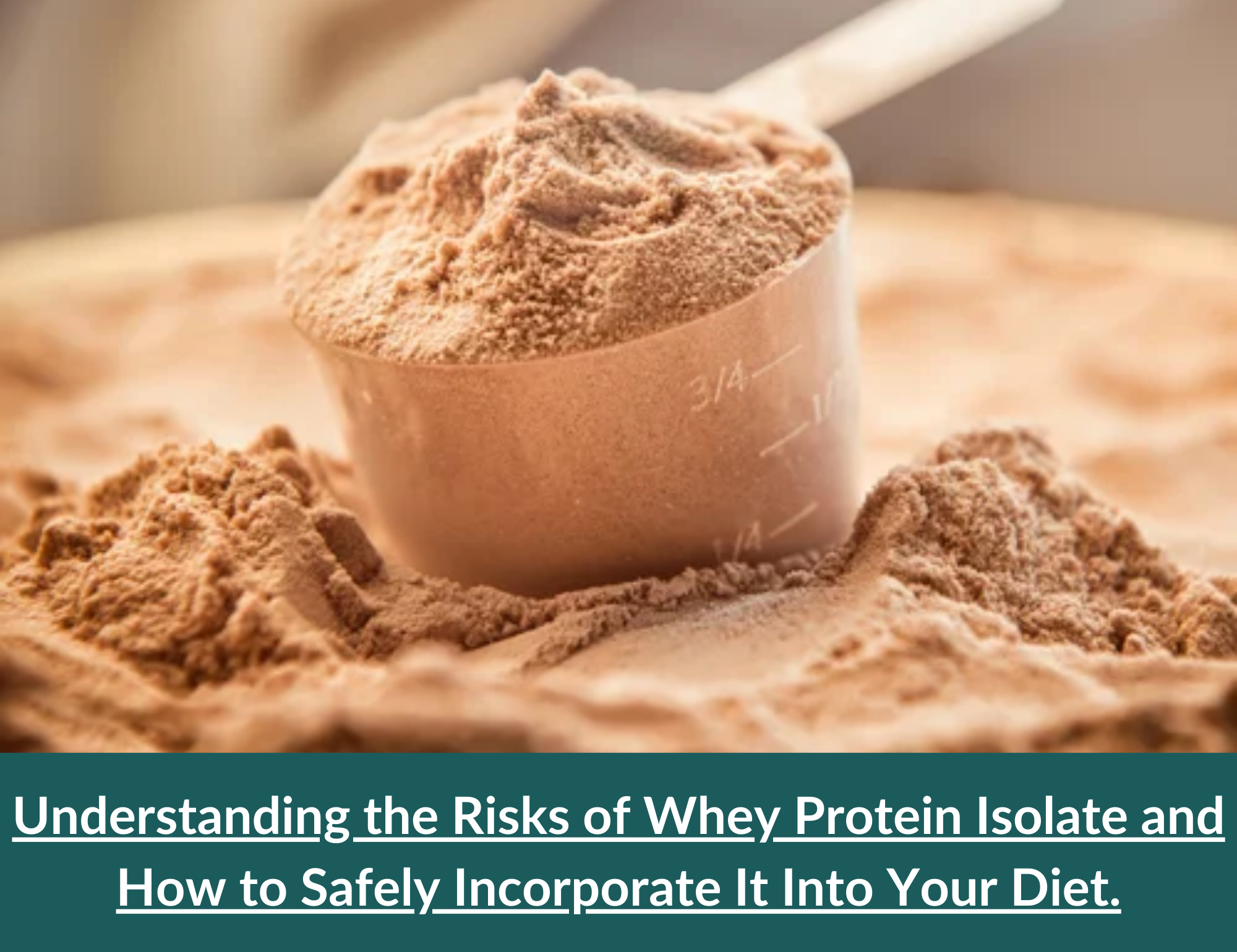Whey protein isolate (WPI) is a popular dietary supplement among fitness enthusiasts, bodybuilders, and athletes. WPI is a complete protein source, containing all nine essential amino acids required for muscle growth and repair. While WPI has several benefits, it also poses some risks when consumed excessively.
This article, discusses the potential risks of consuming Whey Protein Isolate and how to mitigate these risks.
What is Whey Protein Isolate?
Whey protein is a byproduct of cheese production and is separated from milk. Whey protein isolate is a highly purified form of whey protein that contains more than 90% protein and minimal amounts of carbohydrates and fats.
Whey Protein Isolate is popular among fitness enthusiasts because it is quickly absorbed and contains high amounts of essential amino acids, aiding muscle growth and recovery.
Potential Risks of Whey Protein Isolate
- Digestive Problems: Consuming too much Whey Protein Isolate can lead to digestive problems such as bloating, gas, and diarrhoea. These symptoms occur because WPI is rapidly absorbed, which can cause an overload of protein in the digestive system, leading to digestive discomfort.
- Kidney Problems: Consuming excessive amounts of protein, including Whey Protein Isolate, can strain the kidneys. The kidneys filter excess protein and other waste products from the blood. If too much protein is consumed, the kidneys may become overworked and leading to kidney damage.
- Liver Problems: The liver is responsible for processing protein and removing excess nitrogen from the body. Consuming excessive amounts of protein, including Whey Protein Isolate, can strain the liver, leading to liver damage.
- Dehydration: Consuming high amounts of protein, including Whey Protein Isolate, can increase the body’s need for water. If enough water is not consumed, dehydration can occur.
How to Avoid Risks of Whey Protein Isolate
- Follow the Recommended Dosage: The recommended daily intake of Whey Protein Isolate varies based on age, gender, and activity level. It is essential to follow the recommended dosage to avoid any adverse effects.
- Stay Hydrated: Drinking plenty of water while consuming Whey Protein Isolate can help prevent dehydration and reduce the risk of kidney damage.
- Monitor Protein Intake: Consuming too much protein, including Whey Protein Isolate, can lead to several health problems. Monitoring protein intake and ensuring it does not exceed the recommended daily intake is essential.
Whey protein isolate is a popular dietary supplement that has several benefits. However, it also poses some risks when consumed in excess. Consuming excessive amounts of Whey Protein Isolate can lead to digestive problems, kidney problems, liver problems, and dehydration. Following the recommended dosage and monitoring protein intake is essential to mitigate these risks.
Don’t let sourcing difficulties hold you back from adding the benefits of whey protein isolate (WPI).
With EasyBuy, you can easily and conveniently procure high-quality WPI at exceptional prices. Our platform offers a seamless procurement process so that you can spend less time sourcing and more time focused on your fitness and nutritional goals. Don’t wait any longer.
Make your WPI purchase through EasyBuy today.
Citations
- Pasiakos SM, Lieberman HR, McLellan TM. Effects of protein supplements on muscle damage, soreness and recovery of muscle function and physical performance: a systematic review. Sports Med. 2014;44(5):655-670. doi:10.1007/s40279-013-0137-7
- Reidy PT, Rasmussen BB. Role of Ingested Amino Acids and Protein in the Promotion of Resistance Exercise-Induced Muscle Protein Anabolism. J Nutr. 2016;146(2):155-183. doi:10.3945/jn.114.203208
- Thomas DT, Erdman KA, Burke LM. American College of Sports Medicine Joint Position Statement. Nutrition and Athletic Performance. Med Sci Sports Exerc. 2016;48(3):543-568. doi:10.1249/MSS.0000000000000852








